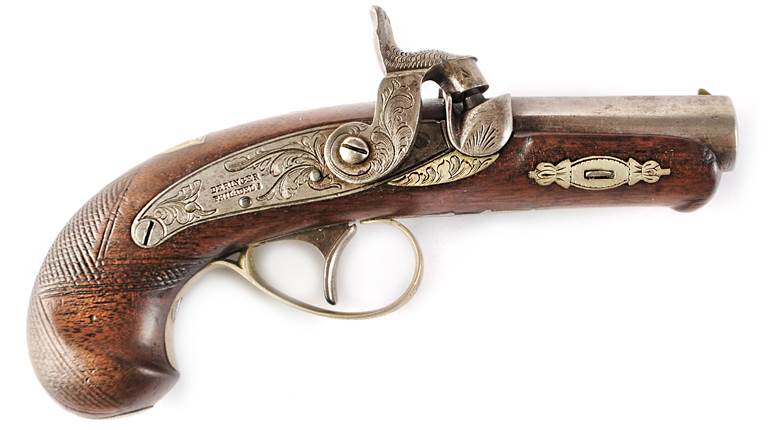
Gun: No. 5 Mk 1 Enfield “Jungle Carbine”
Manufacturer: BSA Shirley
Condition: NRA Excellent (Modern Gun Standards)
Caliber: .303 British
Manufactured: 1947
Value: $850-$900
There’s little doubt that, despite its somewhat truncated service life, among shooters and collectors the No. 5 “Jungle Carbine” remains one of the more popular and recognizable models in the Enfield line. Why? Well, it certainly looks and feels handy. Plus, it provided a more glamorous alternative to the No. 4 Lee-Enfield, unquestionably one of the more unprepossessing bolt-action battle rifles of the 20th century. Unfortunately, in the No. 5’s case, beauty was only skin-deep.
The end of a long line of illustrious Lee-Enfields, the No. 4 without a doubt more than fulfilled the promise of its forebears. It was a superbly rugged, reliable piece of ordnance. But as good as it was, authorities felt that it could be made better, and in 1943 work began on experiments in that direction. It was decided that the gun would maintain the time-tested cock-on-closing bolt-action mechanism, and would employ the same basic 10-shot sheet steel magazine as the No. 4.
Initial efforts to lighten the gun by altering the No. 4’s stock and barrel proved to be less than satisfactory, so some experimental rifles were fabricated from scratch. It was found that by trimming a 25.2" barrel to 20½", muzzle flash was greatly increased. This was duly addressed and corrected by the addition of a cone-shaped flash hider.
The stock itself was shortened and the handguard reduced so that some 11" of the barrel was now exposed. Metal was pared down wherever possible, resulting in a rifle that was almost 5" shorter and 2 lbs. lighter than its 9-lb. predecessor.
As the gun was considerably lighter than the No. 4, recoil became heavier. Accordingly, the butt was equipped with a narrow rubber recoil pad. Other modifications included the addition of a steel nose cap (some guns were made without them), moving the rear sling swivel from the base to the side of the stock, and the adoption of an 8" clip-point bayonet.
A peep-style ladder rear sight with a large-diameter battle aperture, graduated to 800 yds., was mounted atop the rear of the action. Prudently, the .303 British chambering of earlier Enfields was continued.
Approved on Dec. 9, 1944, originally called the “Lightened No. 4 Rifle”, the gun’s title was changed to No. 5 Mk 1. Production was undertaken at the Royal Ordnance Factory, Fazakerly and BSA Shirley. Despite initial approbation from the field, after a while the No. 5 was found to have a dark side—extended shooting showed a dramatic drop-off in accuracy. Put plainly, the rifle had a “wandering zero.”
The No. 5 was given a thorough going over and various components eliminated or redesigned—to no avail. Ultimately the project was halted, officials tendering the excuse that the problem was “inherent in the design.” Years later it was discovered the accuracy drop-off was caused by the action torqueing due to lightening cuts in the back and sides of the receiver. Some 250,000 guns were made before manufacture ceased in 1947. Despite its attenuated life span, the No. 5 did see service in Malaya and Kenya.
Recently Gibbs Rifle Co. (gibbsrifle.com) discovered a quantity of No. 5s and is currently offering them for sale at very fair prices. The rifle shown here, though, is an older import in NRA Excellent condition. It even has a rare matching serial-numbered magazine. As such, it is worth between $850 and $900.




































